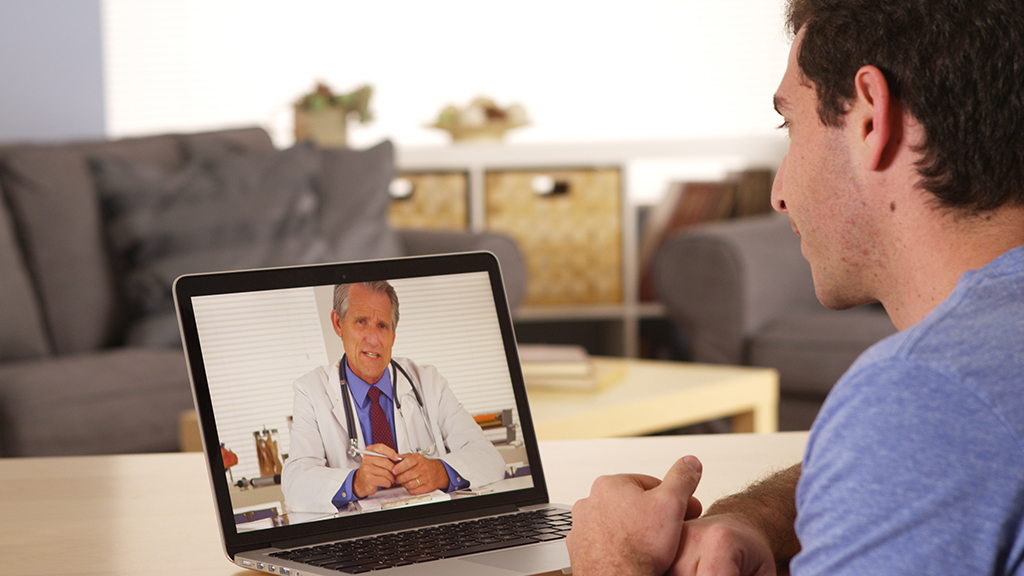
Telemedicine for Triage: Lifesaving Now and Efficient in the Future
In optometry, where diagnosis often depends on getting a magnified view through the slit lamp with stains and dyes and using point-of-care tests, telemedicine has limited use in terms of billable visits. However, the mechanisms of telemedicine have tremendous value as you look to continue serving your patients under coronavirus restrictions.
We sat down with the co-founder of Eye Care Associate of Nevada and OD, Douglas K. Devries as he reveals how he utilises the telemedicine approach in his clinic for triage patients, during this time.
“Tele-triage is helping us limit nonessential visits while ensuring we do see the patients who need us right away, ensuring they can get the care they need without the risks associated with going to a hospital ER during this pandemic. It’s a process we can continue to use as we reopen.”
How Tele-Triage Works
When patients call and a staff member determines they need to talk to a doctor, Devries will call them back and get as much information as possible about their complaint, for example, finding out whether there has been a noticeable decline in vision. He has patients isolate one eye and then the other eye and asks if they can see clearly or if they notice a change. If a change has occurred, he’ll enquire how long ago it started. Devries claims, “I always want to see patients who have a persistent change in vision.”.
For other patients who have visible problems such as redness or swelling, FaceTime is utilised in order for a closer look. Even with FaceTime, the entire tele-triage process only takes about 5 to 10 minutes. Devries does not charge patients for these triage encounters, choosing instead to only bill for the occasional interaction where it’s possible to diagnose a problem and prescribe treatment without seeing the patient in person.
If a visit is necessary, it’s imperative to utilise all screening measures, ensure social distancing from other patients, and have all parties wear masks. All surfaces within the exam room should be wiped down with a strong disinfectant following each encounter.
Immediate Visits and Other Options
During coronavirus restrictions, Devries asked a little more than 50% of the tele-triage patients to come into the practice. The most common reason being that of decreasing vision, accompanied by flashes and floaters, which could be retinal detachment. Devries also saw patients for severe red eyes, combined with a history (one or both eyes, duration, pain, discharge, etc.) that did not allow the ruling out of bacterial infection or herpes.
When patients called about red eyes, discomfort and transient vision fluctuation that seemed to result from allergies or dry eye disease, an office visit was not necessary, instead Devries offered palliative measures and suggested over-the-counter drops, and then talked to the patient again in a few days.
Swelling and pain could go in a few directions and was determined case by case. In most cases, for a bump on the eyelid, he simply recommended application of warm compresses three or four times a day and checked back in a few days. If the swelling spread, the patient could have preseptal cellulitis and require an antibiotic. If it was a chronic situation, Devries would often bring in the patient and perform IPL (Optima IPL, Lumenis). However, if a patient complained of eye swelling, scalp tenderness and jaw claudication, a lab test was organised for temporal arteritis and followed up with the test results to determine if the patient needs a referral to a vascular surgeon.
Devries predicts “As we gradually reopen, we will see a surge in cases of ocular irritation and dry eye, including visits for new patients deferred during 6 to 8 weeks of shutdown. For our existing dry eye patient base, we will resume postponed visits and in-office therapies like Optima IPL, which our patients rely on for management of this chronic, progressive disease.”
Factoring in Compassion
Devries also presses the importance of being aware of the relationship between isolation and mental health, and to ensure compassion for patients is at an all-time high. He recommends seeing patients who are in a distressed, anxious mental state.
As clinic start to reopen it’s essential, you’re proving your patients with effective solutions to their existing and newly developed conditions. The Optima IPL is the next-generation IPL technology developed by Lumenis. The first-of-its-kind, with every pulse of light, this energy-based therapy works to control the inflammatory process and to stop the vicious cycle of inflammation, reducing the need for medications and providing long-lasting results. To provide your patients with a revolutionary solution to Dry Eye Disease contact Lumenis Australia, here.
Expand your clinic offerings and elevate your business with Lumenis’ revolutionary technologies